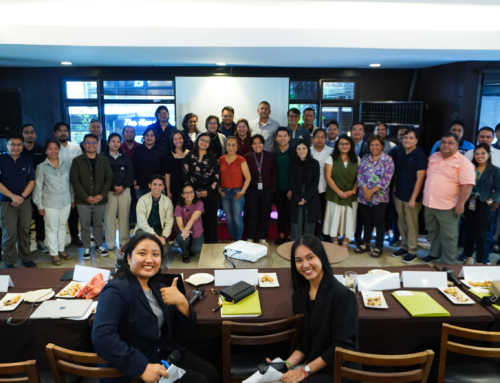MANILA, 14 October 2021 — Experts today called on the government to implement the Clean Air Act with a “higher sense of urgency” in keeping with the latest air quality guidelines issued by the World Health Organization (WHO).
Air quality advocates said the standards need to be raised drastically as air pollution is the leading environmental threat in the country and the fifth leading cause of death and disability, excluding its implications on COVID-19 infections, in a webinar organized today by the office of Deputy Speaker Loren Legarda, the Climate Change Commission (CCC), and the Institute for Climate and Sustainable Cities (ICSC), among other partners.
“Pollutant levels in our air are way above what the WHO considers safe for public health and this is deeply troubling given our pandemic setting and the Delta variant surge. Breathing air containing pollutants above safe thresholds has been shown to increase our susceptibility to respiratory infections,” said ICSC researcher Vince Carlo Garcia.
Air quality in the Philippines failed to meet the standards set by both 2005 and 2021 WHO guidelines. The country is ranked 70th out of 106 most polluted countries in terms of air quality in 2020.
The Philippines’ current air quality standards are specified in the Clean Air Act which was authored by Deputy Speaker Legarda and passed into law as Republic Act No. 8749 in 1999.
ICSC and the Center for Research on Energy and Clean Air (CREA) examined the air quality status in the Philippines from 2002 to 2018, including the values for critical pollutants monitored by the Department of Environment and Natural Resources (DENR) as mandated by the Clean Air Act. Findings from the research will be issued in a report set for release on November 5.
“Revising the Philippines’ standards for outdoor air pollution is the first step in aligning with science, and avoiding the heavy toll of air pollution on our health and well-being,” said CREA analyst Isabella Suarez.
“There are many other provisions in the Clean Air Act that must be implemented and work that is really needed in terms of improvement. We have air quality monitoring stations that are in place. However, admittedly, there are some areas that need to augment air quality monitoring. We need to know where the problem lies,” said Glynda Bathan-Batherina, deputy executive director of Clean Air Asia.
Apart from fine particulate matter (PM 2.5), Garcia noted other pollutants of concern in the atmosphere such as carbon monoxide (CO), nitrogen dioxide (NO2), particulate matter (PM), sulfur dioxide (SO2), and volatile organic compounds (VOC), which mostly come from motor vehicles, burning fossil fuels, and the industrial sector.
“Reducing emissions from key polluting sectors like transport and power will need to follow, and since the sources of air pollution intersect with the carbon emitters exacerbating the climate crisis, we have a real opportunity and imperative to take action,” Suarez added.
“As a bike commuter, it is important that we breathe clean air. We can encourage more people to bike and walk if we know that we have clean air. When we choose active mobility that means one car less on the road and less pollution,” said Pinay Bike Commuter Community founder Jaramia Amarnani.
NOTES TO THE EDITOR
“Stories for a Better Normal: Pandemic and Climate Change Pathways” is organized with support from the Mobility Awards (ICSC, MNL Moves, The Climate Reality Project Philippines, 350 Pilipinas, and the Pinay Bike Commuter Community), Department of Education, Philippine Information Agency, and Mother Earth Foundation. facebook.com/iamlorenlegarda
CONTACT
AC Dimatatac, media coordinator: media@icsc.ngo, +63 998 546 9788
###
Photo by Roi Mojado from Pexels.






